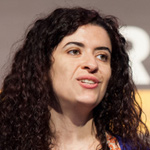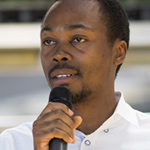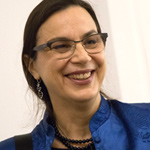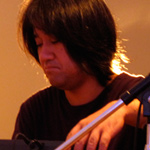The Prix Ars Electronica has been honoring the world’s most outstanding works of media art since 1987. Plus, this year’s Golden Nica recipients receive up to €10,000 per category and will be prominently featured at the 2018 Ars Electronica Festival in Linz. Once again this April, international juries will gather for several days in Linz to jointly select this year’s prizewinners. Here we present the jurors in the Digital Communities and Interactive Art + categories. In part 2, we introduce the jurors in Computer Animation and u19 – CREATE YOUR WORLD.
Digital Communities
Staged in alternate years, the Digital Communities category honors projects that utilize technology to, among other things, enable people to get linked up in networks, to improve their habitats and their lives, or to make society aware of social trends in need of correction. This year’s jury includes several familiar faces who have previously served as Prix Ars Electronica jurors.
 One is Leila Nachawati, a Spanish-Syrian blogger, communications strategist and human rights activist who’s serving on the Digital Communities jury for the fourth time this year. In addition to teaching communications at Carlos III University in Madrid, she’s on the staff of APC.org and SyriaUntold, and writes for various media outlets such as Global Voices Online and Al-Jazeera. One is Leila Nachawati, a Spanish-Syrian blogger, communications strategist and human rights activist who’s serving on the Digital Communities jury for the fourth time this year. In addition to teaching communications at Carlos III University in Madrid, she’s on the staff of APC.org and SyriaUntold, and writes for various media outlets such as Global Voices Online and Al-Jazeera. |
 Austrian journalist Sarah Kriesche has worked in private and public broadcasting (for Ö1 and Radio Wien) for 20 years, and is another repeat juror. Her reportage primarily deals with information technology, subcultures and technical innovation. Austrian journalist Sarah Kriesche has worked in private and public broadcasting (for Ö1 and Radio Wien) for 20 years, and is another repeat juror. Her reportage primarily deals with information technology, subcultures and technical innovation. |
 This is the second time that Kazuko Tanaka is a juror in this category. For two decades, she’s been on the staff of Hakuhodo Inc., a Japanese advertising agency that, in 2012, launched a network for mothers working in Japan. She was also a founding member of Voice Vision Inc., where she focuses on community projects. Since 2014, she has supported the Ars Electronica Festival’s Future Innovators Summit which is also being staged in conjunction with the Ars Electronica Tokyo Initiative for the first time this year. This is the second time that Kazuko Tanaka is a juror in this category. For two decades, she’s been on the staff of Hakuhodo Inc., a Japanese advertising agency that, in 2012, launched a network for mothers working in Japan. She was also a founding member of Voice Vision Inc., where she focuses on community projects. Since 2014, she has supported the Ars Electronica Festival’s Future Innovators Summit which is also being staged in conjunction with the Ars Electronica Tokyo Initiative for the first time this year. |
 Oscar Ekponimo is a software developer and entrepreneur. TIME Magazine named him to its 2017 list of Next Generation Leaders, first and foremost for his Chowberry app that hooks up supermarkets to NGOs and charitable organizations so leftover groceries don’t have to be thrown away and can be distributed to the needy. The computer scientist with a master’s from University of Calabar isn’t making his first trip to Linz—he took part in the Future Innovators Summit twice. Oscar Ekponimo is a software developer and entrepreneur. TIME Magazine named him to its 2017 list of Next Generation Leaders, first and foremost for his Chowberry app that hooks up supermarkets to NGOs and charitable organizations so leftover groceries don’t have to be thrown away and can be distributed to the needy. The computer scientist with a master’s from University of Calabar isn’t making his first trip to Linz—he took part in the Future Innovators Summit twice. |
 Dietmar Offenhuber has served on several Prix Ars Electronica juries—Computer Animation, Hybrid Art and, this year, Digital Communities—and also worked at the Ars Electronica Futurelab. He is currently a lecturer at Northeastern University’s Department of Art + Design and Public Policy, where he heads the graduate program in Information Design and Visualization. He got his Ph.D. at MIT, which recently published his work “Waste Is Information.“ Dietmar Offenhuber has served on several Prix Ars Electronica juries—Computer Animation, Hybrid Art and, this year, Digital Communities—and also worked at the Ars Electronica Futurelab. He is currently a lecturer at Northeastern University’s Department of Art + Design and Public Policy, where he heads the graduate program in Information Design and Visualization. He got his Ph.D. at MIT, which recently published his work “Waste Is Information.“ |
Interactive Art +
A wide array of genres and formats can be submitted for Interactive Art + prize consideration. This Prix Ars Electronica category is staged in alternating years. The “plus sign” is meant to signal a readiness to receive submissions that are novel experiments and interpretations.
 Victora Vesna has done jury duty annually since 2015, alternating between the Hybrid Art and Interactive Art + categories. She is a professor in UCLA’s Department of Design|Media Arts and head of the UCLA Art|Sci Center. Her interdisciplinary projects entail long-term collaboration with artists and scholars, and she passes on the insights gained thereby to her students. Her latest stint as guest artist in the Ars Electronica Center’s Deep Space 8K was “Bird Song Diamond,” an interactive installation showcased during the 2017 Ars Electronica Festival. Victora Vesna has done jury duty annually since 2015, alternating between the Hybrid Art and Interactive Art + categories. She is a professor in UCLA’s Department of Design|Media Arts and head of the UCLA Art|Sci Center. Her interdisciplinary projects entail long-term collaboration with artists and scholars, and she passes on the insights gained thereby to her students. Her latest stint as guest artist in the Ars Electronica Center’s Deep Space 8K was “Bird Song Diamond,” an interactive installation showcased during the 2017 Ars Electronica Festival. |
 Karin Ohlenschläger is the artistic director of LABoral Centro de Arte y Creación Industrial in Gijon, Spain, as well as a historian, scholar and curator who has focused on media art, science and contemporary art since 1985. She has headed numerous international initiatives, chaired the Banquet Foundation of Art, Science, Technology and Society, and co-founded MediaLab in Madrid. This is the third time she is serving on a Prix Ars Electronica jury. Karin Ohlenschläger is the artistic director of LABoral Centro de Arte y Creación Industrial in Gijon, Spain, as well as a historian, scholar and curator who has focused on media art, science and contemporary art since 1985. She has headed numerous international initiatives, chaired the Banquet Foundation of Art, Science, Technology and Society, and co-founded MediaLab in Madrid. This is the third time she is serving on a Prix Ars Electronica jury. |
 Lubi Thomas works in the fields of digital & new media art. Her broad palette of work includes exhibitions, projects, residencies and mentoring/educational programs. “Curating in Uncharted Territories,” her dissertation at Queensland University of Technology, dealt with curatorial work beyond the realm of conventional art spaces. This is her debut as a juror. Lubi Thomas works in the fields of digital & new media art. Her broad palette of work includes exhibitions, projects, residencies and mentoring/educational programs. “Curating in Uncharted Territories,” her dissertation at Queensland University of Technology, dealt with curatorial work beyond the realm of conventional art spaces. This is her debut as a juror. |
 This is also the first time that Slovenian artist, curator and academic researcher Maša Jazbec is on board. She holds a Ph.D. in human informatics, attained at the Univ. of Tsukuba (Virtual Reality Lab) and MA in interactive art, achieved at Interface Culture at the Univ. of Arts and Design Linz. She was a visiting researcher at Ishiguro Laboratory at ATR. This is also the first time that Slovenian artist, curator and academic researcher Maša Jazbec is on board. She holds a Ph.D. in human informatics, attained at the Univ. of Tsukuba (Virtual Reality Lab) and MA in interactive art, achieved at Interface Culture at the Univ. of Arts and Design Linz. She was a visiting researcher at Ishiguro Laboratory at ATR. |
 Another rookie juror is Minoru Hatanaka, head curator of the NTT InterCommunication Center. He played a key role in the 1997 launch of that gallery for media art in Tokyo. Since graduating from Tama Art University’s Department of Art Science, Minoru Hatanaka has curated numerous exhibitions. Another rookie juror is Minoru Hatanaka, head curator of the NTT InterCommunication Center. He played a key role in the 1997 launch of that gallery for media art in Tokyo. Since graduating from Tama Art University’s Department of Art Science, Minoru Hatanaka has curated numerous exhibitions. |
Take advantage of this opportunity to submit an entry to the Prix Ars Electronica! The deadline is March 12, 2018 (extended deadline). Details and an entry form are available at ars.electronica.art/prix. Or if you’ve discovered a fascinating work of media art that’s worthy of a Golden Nica, you’re cordially invited to nominate it.
